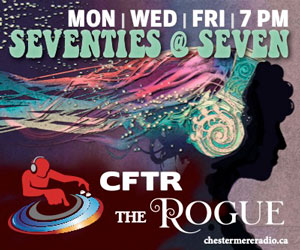While restocking the basement liquor supply in preparation for a potential quarantine during the sixth wave, I found that I was entirely out of Vermouth, making isolation martinis an impossibility. Fortunately, a quick trip to the No Frills on Rainbow Road let me stock up on both the white and less common red varieties of Vermouth.
For those not familiar with Vermouth, it comes from the German word vermut, which you may know as wormwood, also famous as principal flavoring agent in Absinthe, until it was declared poisonous.
Like many other spirits, Vermouth began as a medicinal potion in the 12th century. The Italians claim to have invented it by steeping herbs and flowers in a red wine, while the French make the same claim, only using white wine as the base.
All styles of Vermouth start with an aromatised wine. Herbs, flowers, and spices are ground up and added to a wine base, which is left to age for a few years to infuse the flavor. A grape-based distillate is then added to increase the alcohol content up to around 19%.
The French style of Vermouth is the most popular worldwide, and is also widely known as dry or white Vermouth. This is the Vermouth you will find in your martini. The Italian style of Vermouth is based on a red wine, and is much sweeter than French Vermouth. You will find this style in sweeter drinks like a Manhattan. While there was fierce rivalry between the French and Italian producers in the 1700’s, most Vermouth companies today offer both styles.
I still have fond memories of the carefree pre-pandemic days, in a Vermouth bar in Madrid, where both red and white Vermouth was poured directly into the glass from spigots in the large wooden Vermouth barrels that made up the entire wall behind the bar. It was in this century-old bar that I developed a taste for red Vermouth, which has been produced in Spain since the 18th century. The Spanish style of Vermouth tends to be a bit sweeter than their French counterparts, and is typically served with 2-3 ounces poured over ice cubes, often paired with delightful little tapas like olives or salted fish.
Unlike other spirits, there is no specific recipe for Vermouth, so different brands can vary widely in flavour. Some of the more common botanicals used to add flavour to Vermouth include cloves, cinnamon, quinine, ginger, wormwood (in tiny quantities), coriander, and rosemary. There are dozens of Vermouth producers in France and Italy, but they only export a few brands to North America, so our experiences are somewhat constrained by the lack of variety at our local liquor merchants.
Vermouth languished as a boring medicinal potion through the middle ages, used as a digestive aid or a healthy alternative to the plague-ridden waters of Europe. It wasn’t until the early 1800’s that the style of dry Vermouth that we’re most accustomed to was first produced. This new style took the cocktail world by storm, and we’ve been enjoying it ever since.
My martini preferences are pretty traditional, so I start with two parts of The Gnu Normal London Dry Gin from Calgary-based Gnu Craft Spirits, then add one part Dry Vermouth. If I am feeling adventurous, I add a tiny splash of peated whisky to imbue the martini with a smoky flavour.
As you may have guessed from the name, the Gnu Normal London Dry Gin is made in same style as Bombay Sapphire or Beefeater, a smooth and clean Gin made with locally sourced ingredients. The Gnu Craft Spirits distillery opened in Calgary just last month, and their wares can be found at the Co-op liquor store in Strathmore, and dozens of other bottle shops in Calgary.
For those who prefer a bit of mixer in their martinis instead of just straight liquor, my take on the Cosmopolitan starts by adding several ice cubes to a martini shaker, then pour in two ounces of the Tippa Lovebird Gin from an Okotoks nano-distillery, half an ounce of dry Vermouth, and one ounce of Chambord Royale raspberry liqueur. Fill the shaker with Cranberry juice, then shake vigorously. Pour into two or three fancy martini glasses and serve.
While we don’t have much a domestic Vermouth industry, be sure to pick up some crafty Alberta Gin to mix with your Vermouth!








